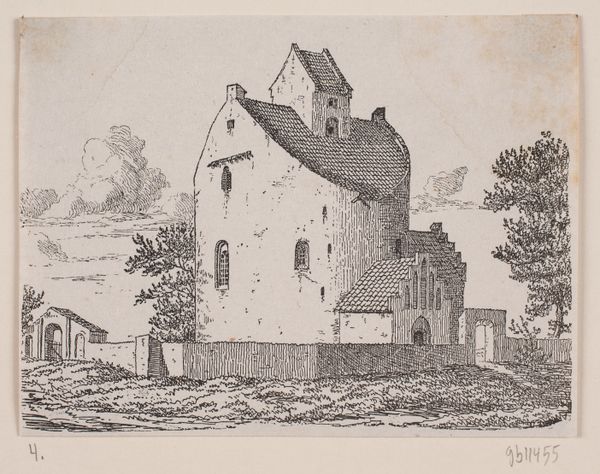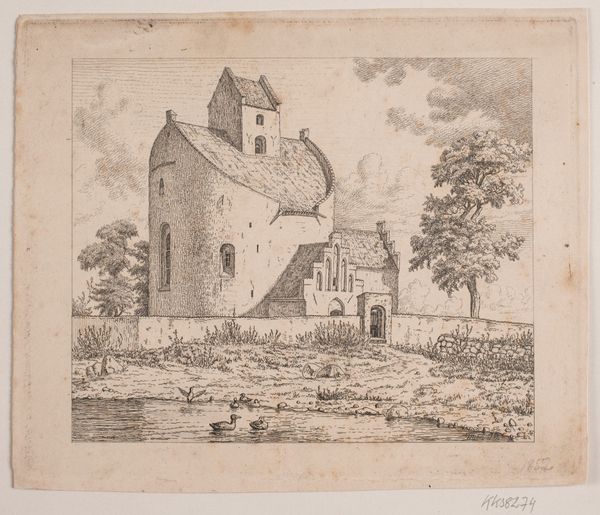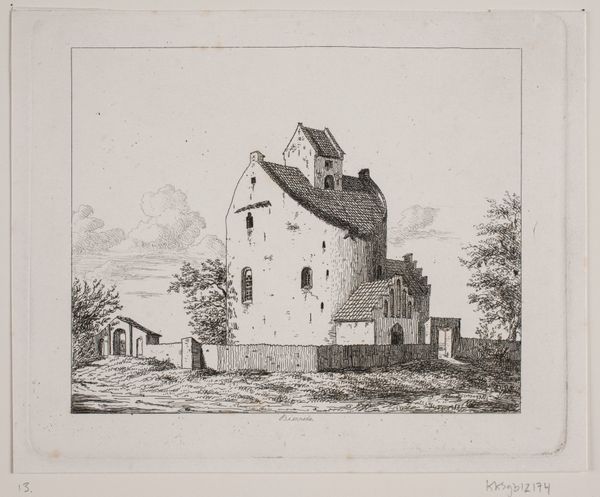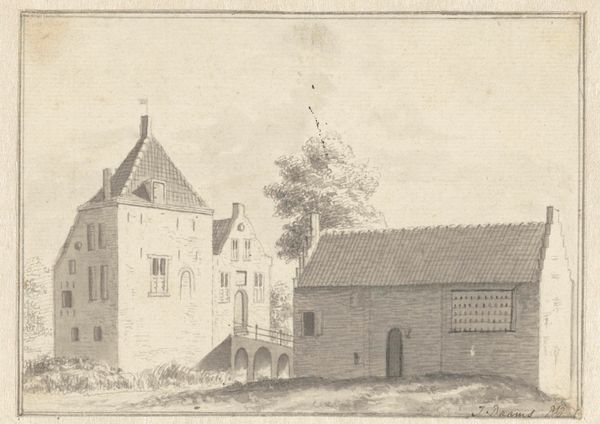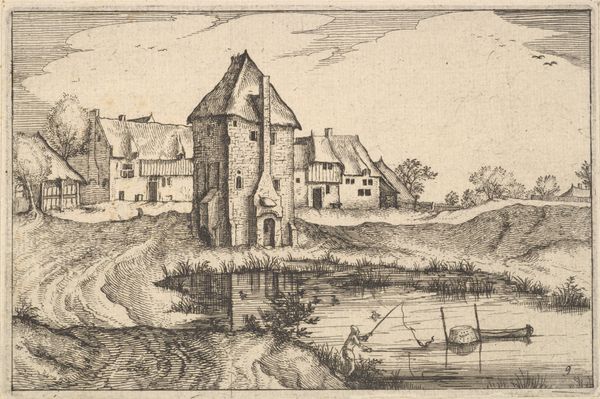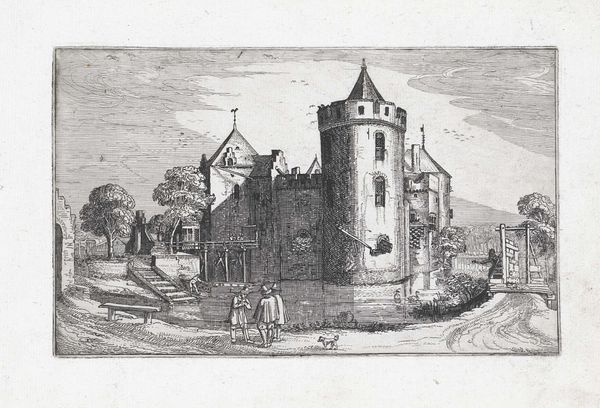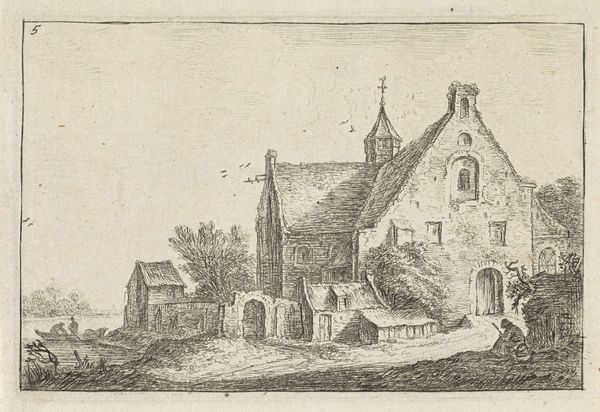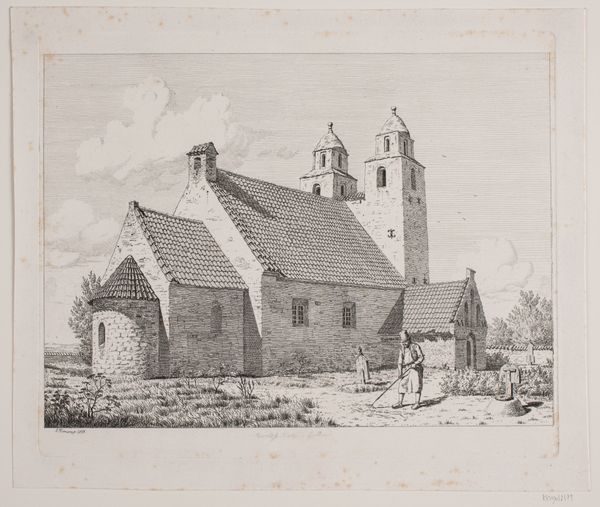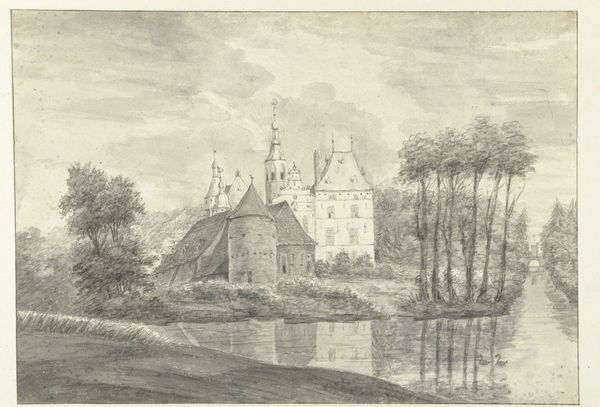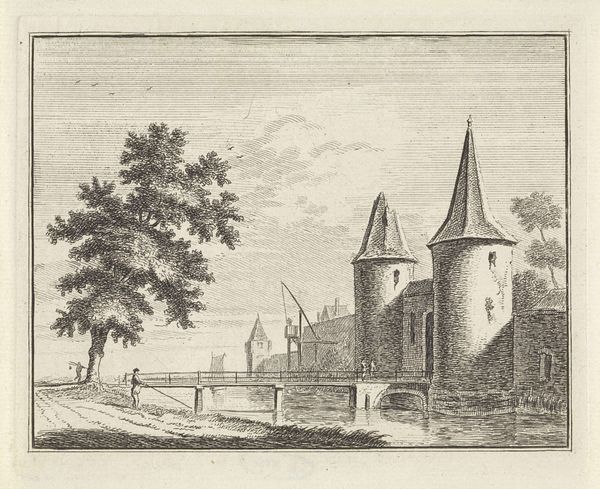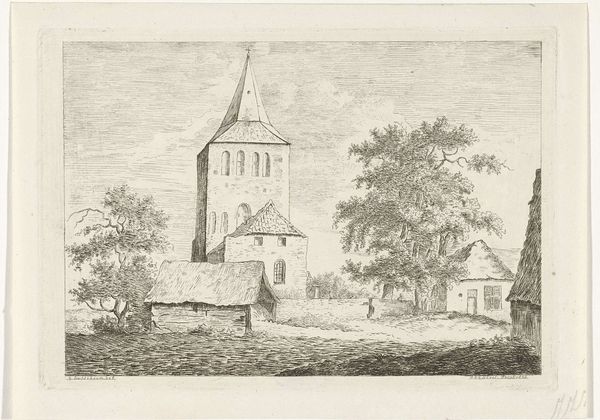
Dimensions: 152 mm (height) x 185 mm (width) (plademaal)
Vilhelm Kyhn made this print of Bjernede Church using etching, a process that allows for great detail. Kyhn would have covered a metal plate with a waxy, acid-resistant ground, then scratched his image into that surface. The plate was then submerged in acid, which bit into the exposed lines, creating grooves. What's interesting is the way that Kyhn uses line to describe not only the form of the church – its solid, rounded structure – but also to give a sense of light and atmosphere. The closely packed lines suggest texture, weight, and the weathering of stone over time, echoing the church's own history and the labor embedded in its construction. In a way, the etching process mirrors the slow accumulation of time and effort evident in the building itself. It's a reminder that even in a seemingly simple image, materials and making are key to understanding its cultural significance.
Comments
No comments
Be the first to comment and join the conversation on the ultimate creative platform.
